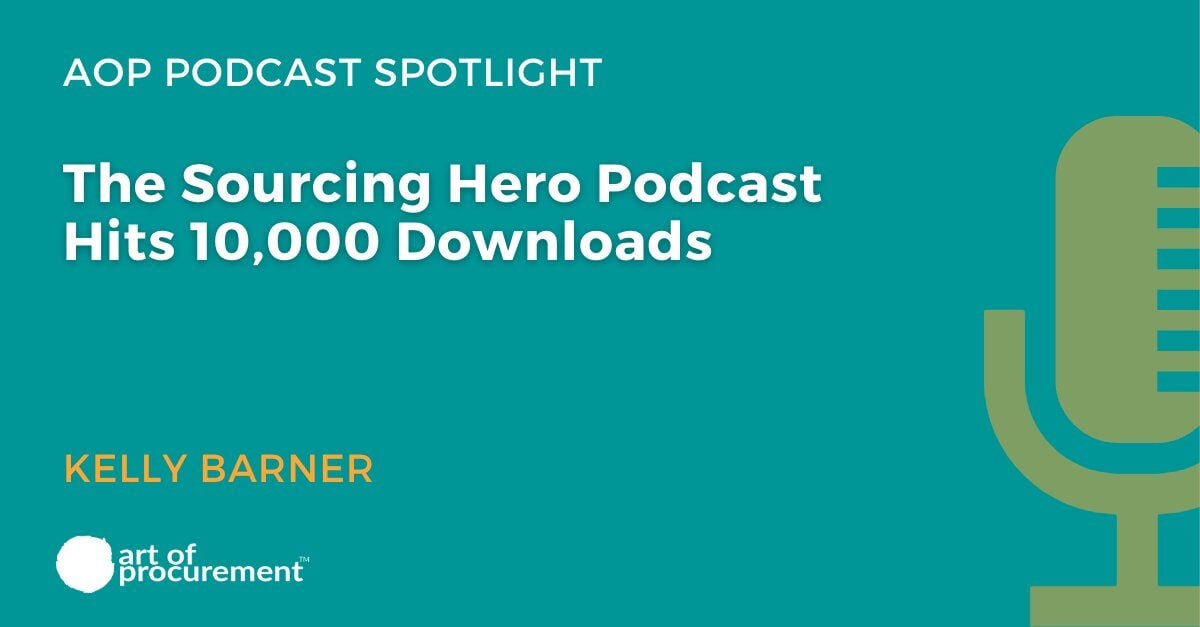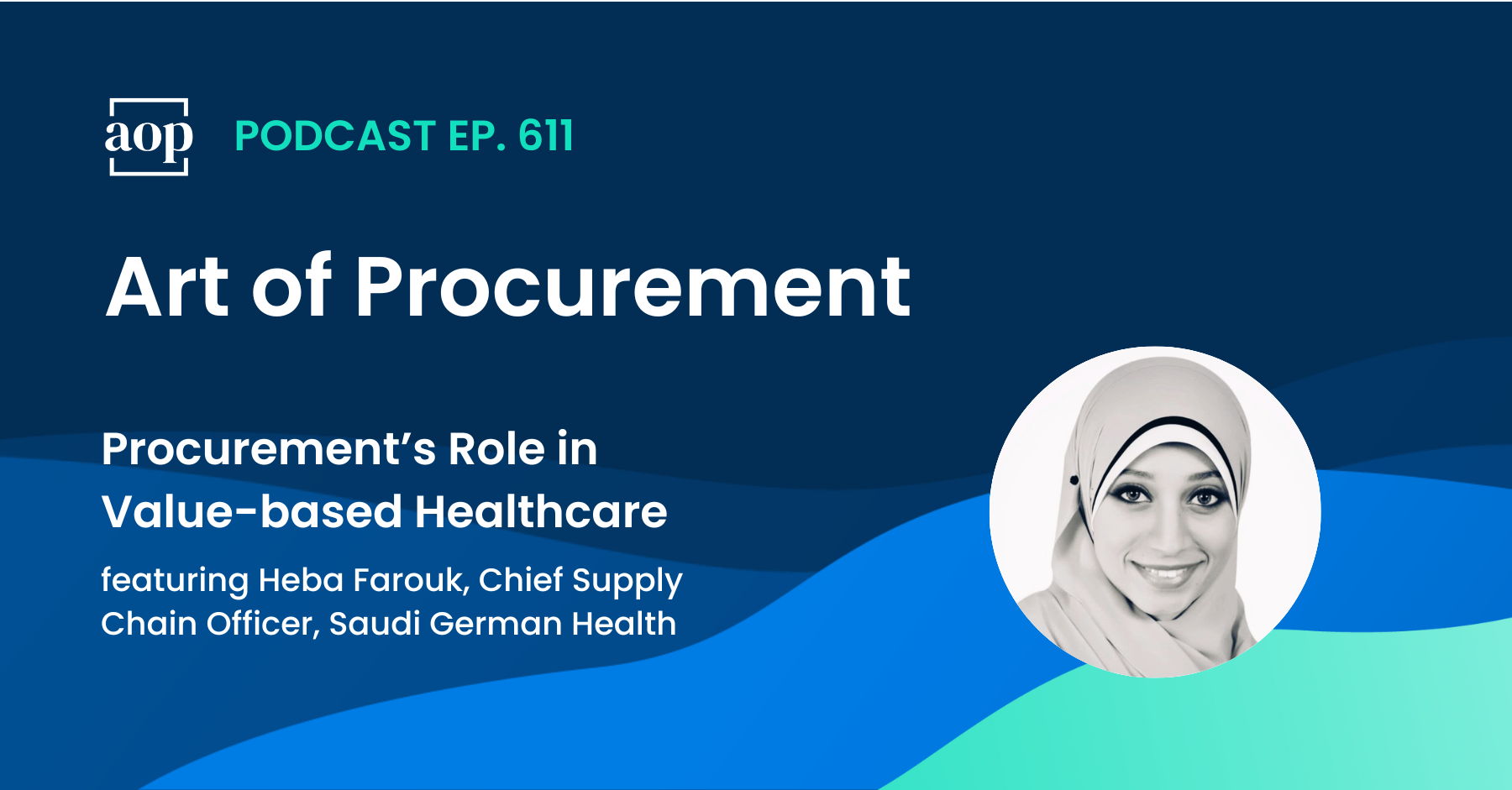5 min read
Getting the ‘People Part’ Right: A Sourcing Hero Conversation with Thomas Siersbæk Heller-Njor
Kelly Barner : September 8, 2022

Earlier this year I was joined on The Sourcing Hero podcast by Thomas Siersbæk Heller-Njor. He is currently the Founder and CEO of CostBits and his experience includes roles at Maersk and PWC. During his career, he has worked as an individual contributor, a CPO, and every level in between.
Of all the things he shared with me during the conversation (which you can listen to here), I found his perspective on human behavior the most interesting.
Here is a Q&A excerpt of some of my favorite moments from the conversation:
Q: How do you go about defining the personas that you’re working with while still thinking of them as approachable groups versus getting focused in on individual human personality traits?
A: That’s a super good point because you have different layers of the personas. You definitely have the ones that are defined by the position within the organization, the functional aspects of the role, the mandate they carry, and then the different personalities which at the end are the ones that you need to motivate.
The reason for even having personas, honestly, is to try to identify common traits within the group of people that we work with.
If I work with C-suite, I know that these people are mostly concerned about the strategic impact. They focus on compliance and risk mitigation. They either focus on steep cost-cutting or maybe facilitating growth – depending on the traction of the company.
If I work with frontline office or blue-collar workers, they mostly focus on “do we actually have a contract with our suppliers that will make their life easier in a way that they can be compliant without having to spend all that time manually looking up stuff in the catalog or online where they can’t find it anyway?”
We had to build these personas simply to find a way to make sure that whatever we did in procurement had a real impact on the different types of groups of people we work with, but also to find out what motivates them so we could actually go to these groups and make sure that we would engage them in a way that was eye to eye and saying, “As we do this, your life will be easier, dear office worker.” If we go to the C-suite, we can make sure that we support the strategic path for the company as a whole. Very, very different agendas, but probably within the same sourcing, honestly.
Q: When we think about leading procurement transformation, we always go back to that classic triad of people, process, and technology. We acknowledge the people. We tolerate the people… sometimes. But procurement tends to focus on investments and technology and changes to process. Why do you think we tend to either not put enough energy into the people aspect or in some cases forget to invest in the people at all?
A: I think there’s a range of issues for that or reasons for it.
I think one of the key things is that it’s a lot more controllable to work with systems and processes because you can map it out, you can make a plan for it, you can get resources, funding, consultants, whatever can help you out, and you can be very factual about it.
But most people don’t have the skillset to be factual about the people that they have to engage with – the personas or the segments or the stakeholders – that they actually should be working with, and they tend to forget them. Or maybe they spend their first bit of time whenever they start a big project with a focus on system and processes to map it out. But the real difference is actually you need to find a way to get the people motivated because, if you don’t motivate, it doesn’t work.
I think most in procurement have tried making awesome contracts and then coming back and realizing that nobody has even heard about them. We had a learning at some point where I actually pitched a project to start regional procurement where we were sitting in the headquarters in Denmark and saying, “Now, we’ve saved X amounts of hundreds of millions. We’re all fantastic,” and then we couldn’t really find the money.
We started asking on the regional level and they had a different perspective on this, and they had never really heard about our systems and processes, but they did recognize some of the people. We’ll go layer by layer, regional to national to frontline dock workers, and most of them are using the same systems and processes, and most of them had never heard about it.
If we didn’t think of the people, we would honestly all have been working on a subset of what needed to be worked on to make sure we had real impact. It’s too easy to work on systems and processes even though that is very complicated. We should work on it, but we should remember that they are being used very different. C-suite will use it in one way and a dock worker will use it in a very, very different way, and maybe own that portion of it, and we tend to forget that.
Q: How did you help your team walk a mile in the shoes of some of the persona groups that didn’t have a whole lot in common with them?
A: First of all, when it comes to what we did from a training perspective, that’s probably the easiest example. Obviously, we had to start at the headquarter pack. If not, we have nothing.
Let’s say we had a focus on vessel repairs, for instance, which is a massive multiverse – this category within Maersk – as soon as we had the first categories done, we would basically go back and change all the materials, so it fit with that category. Instead of me being the one speaking, we would basically ask somebody who either had done the training before or somebody who was supposed to be getting training and we would onboard them just a bit before we did the training with everybody else, and we would make sure they had a very active role.
If it was their first time, they would present the cases, they would present the impact, they would present the situation, what they knew about the supplier market, and things they actually knew and maybe less on methodology.
If they had more insights on the methodology behind procurement, we would actually get them to train some of the methodology pieces also. That way, they would be saying it in their words to their audience with people that they could actually align with which is a lot better than me saying exactly the same thing but being headquarters, I’m just not that trustworthy – not compared to these people.
Q: When you think about all of the change that you had led and experienced and the corresponding changes that you have seen in the procurement professionals that you’ve worked with, what would you say are the skillsets, the tendencies, the human strengths that are required for procurement to be successful in the long term?
A: I think there are a few things.
First of all, procurement needs to be better at being extremely factual. I think we need to be better at using the insights and the data that we have so we can speak with complete trust. “This is how much money we spend with each supplier. This is how the supplier market works, et cetera.” That is something that we own more than anybody else. That’s our power. They put them in process.
I think we tend to skip that a bit. Or, if we do it, we do it maybe once, and then we forget to follow up on it. I think that’s definitely something we should be better at. I think that’s the foundation. I think something that is being missed, unfortunately, is that we tend to forget that procurement actually is the same as working in sales. I think I’ve said this before, but as a procurement professional, you need to sell the idea to a cost owner that you, as a service center – because procurement is a back-office service center – can bring value to that cost.
We are not a threat. We are a support – like HR or IT or legal or anybody else. We need to do the same exercise with every single internal stakeholder. Then, we need to take all of that and say, “How do we go to the supplier market and make it appealing and interesting for a whole range of suppliers who suddenly become active and start bidding on this in a faster way where we can all gain share on it. I think that selling part is something that is almost a no-word.
I don’t think most procurement professionals acknowledge that most of what they do beyond the mechanics of procurement is actually doing sales.
To learn more about The Sourcing Hero podcast, a collaboration between Art of Procurement and the team at Una, click here.




